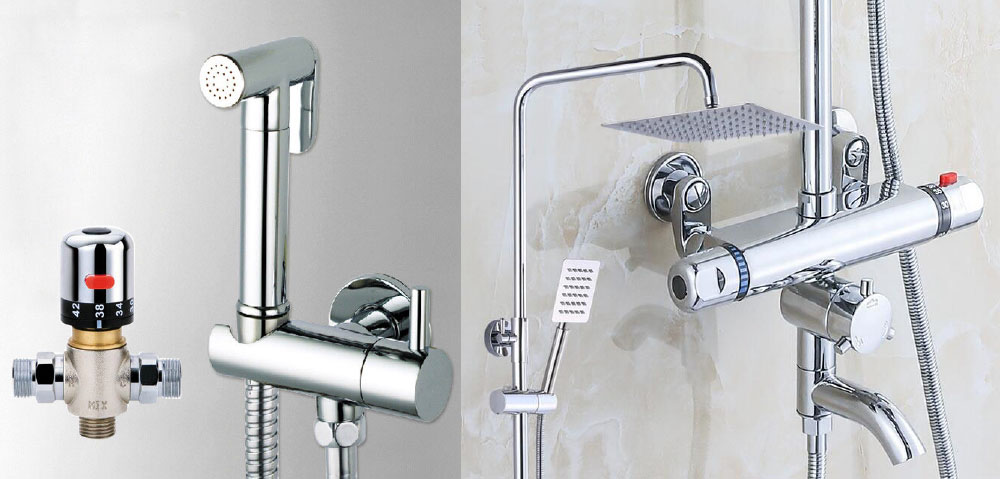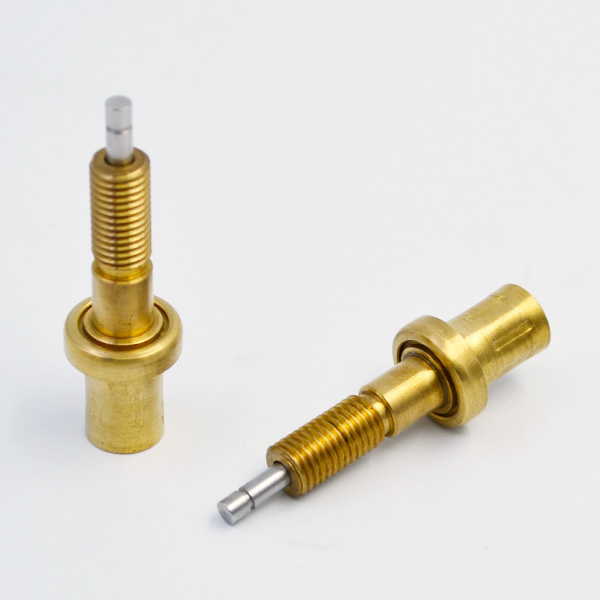At present, the single motor wiper system commonly used in automobiles is synchronous swing of wiper arm through mechanical connection. This structure has some shortcomings, such as large space occupation and inconvenient maintenance in case of failure. The dual motor wiper system overcomes these shortcomings and reduces the weight and mechanical noise of the system, but it must adopt reasonable methods. It solves the problem of synchronization of two motors.In order to solve this problem, a dual motor synchronous control wiper system controller based on CAN (controller area network) bus is designed.The hardware circuit of each part of the controller is built. According to the constraints in the wiper arm swing process, the reference trajectory is established, and the position information of the wiper arm collected by the experiment is plotted into the actual trajectory by curve fitting.Through master-slave synchronous control mode, CAN bus is used as the communication bus for information transmission between the two sides of the controller, which solves the synchronous control problem of the dual motors. The related experiments are carried out on the actual vehicle and have been put into use.The experimental results show that the dual motor wiper system controller based on CAN bus can realize the synchronous and stable operation of the wiper arm, and can closely track its reference trajectory.As an important part of automobile safety system, wiper system is mainly used to remove rain, snow, dust and other debris on windshield glass.At present, in the front-end wiper system of vehicles, single motor is used to drive the same direction wiper, and mechanical connection is used between left and right wipers to achieve the same reciprocating wiper arm swing.This structure is not only large in volume and weight, but also extremely inconvenient in maintenance.Therefore, many automobile manufacturers have proposed a dual motor vehicle wiper system with electronic system instead of mechanical connection and opposite wiper mode.In the dual-motor vehicle wiper system, each wiper arm is driven by two motors installed on both sides of the windshield glass, so it increases 10% of the wiper area [5] compared with the traditional mechanical linkage method, which provides a better vision for the driver of the car, reduces the blind area of the sight, and also has the advantages of small size, light weight, thermostatic element low noise and disassembly side. It has the advantages of convenience.In the wiper system of dual motor vehicle, one controller is equipped in each of the two motor components.In order to ensure the safe operation of the two wiper arms without collision, the real-time transmission of the position information of the wiper arms between the two controllers must be realized so that the wiper arms can swing synchronously and keep a certain safe distance from beginning to end.Therefore, how to transfer the position information quickly and reliably and realize synchronous swing of two wiper arms has become a hot topic of current research [6-9].In [7], a method of synchronous operation of multi-motor system using DSP (digital signal processing) as main control chip is proposed, which effectively improves the stability of synchronous operation of multi-motor system.In paper [8], a synchronous control method based on clock is proposed, which sets different clock benchmarks for the two controllers, thus improving the response speed and anti-interference performance of the dual-motor wiper control system.[9] By using cross-coupling controller, the coordination and control accuracy of the dual-motor synchronous control system are improved.Neither of the references mentioned above deals with the mode of position information transfer between the two controllers, which is very important for the synchronous operation of the two wiper arms and the fast response of the controller when the system fails. Therefore, this paper proposes the design of a dual motor synchronous control wiper system controller based on CAN (controller area network) bus.CAN bus widely used in automotive electronic system is used as communication bus [10-12]. The purpose is to realize the fast transfer of position information between two controllers and to facilitate reliable data exchange between the controller and other electronic control units of automotive.In order to realize the real-time detection of wiper arm position, a zero-wear non-contact angle position detection chip is adopted.At the same time, in order to achieve the coordinated and synchronous operation of the left and right wiper arms, the master-slave synchronous control mode is adopted. The driver side wiper motor is selected as the main control object, and the passenger side wiper motor is chosen as the slave control object.The dual motor synchronous control wiper system controller based on CAN bus consists of two control units, driver side control unit and passenger side control unit.

The driver side control unit is the main control unit and the passenger side control unit is the slave control unit.Each control unit is mainly composed of five modules: microcontroller module, driver module, position detection module, current detection module, CAN bus communication module.The microcontroller module is the core of the wiper controller.This design chooses INFINEON’s high-performance, low-power single-chip XC886 as the main control chip.XC886 is an enhanced 8-bit single chip computer of Infineon XC88x series, which integrates four 16-bit timers, six PWM signal generators, 8-channel 10-bit AD conversion module and other rich on-chip peripherals.In the design of the controller, only the position detection signal preprocessing circuit, driving circuit and over-current protection circuit are needed.XC886 also integrates two nodes of MultiCAN module [14], which just meets the needs of the controller for CAN nodes.One is for the controller to communicate with other electronic units of the automobile, and the other is for the master controller to transfer the location information to the slave controller.In addition, the integrated multiplying/dividing unit can quickly realize 16-bit multiplying and dividing operation, which greatly speeds up the calculation and update of duty cycle of PWM control signal, and makes the position control of wiper arm more accurate.The main circuit of this design adopts H-bridge topology consisting of four power MOSFETs. The speed of the motor is regulated by adjusting the duty cycle of PWM signal driving the MOSFET. The principle is to adjust the voltage and speed of the motor by changing the average voltage at both ends of the armature.Because four MOSFETs need to be driven, HIP 4081A, which can drive four N-channel MOSFETs independently, is chosen as the driver chip in this design.The maximum operating frequency of the chip is up to 1 MHz, and an undervoltage protection circuit is integrated in the chip.

At the same time, the dead time can be added to the PWM complementary control signal by connecting the pin resistance of HDEL and LDEL.
DIS pin is a low-level effective blocking chip output pin.The driver module design is shown in Figure 1.Zero ohmic resistance is used to connect the pin and driver chip of MCU to prevent the high current flowing back into the MCU to damage the chip during the operation of the driver chip located on the power side.The DIS pin is connected with the current clamping protection circuit, and the output of the driver chip is blocked when the current flowing through the motor is too large.HDEL, LDEL pin external resistance of 200K adds 90ns dead time to prevent software added dead time loss.A sampling resistor is connected in series between the two lower arms of H-bridge circuit and the ground for current detection.Two pairs of complementary PWM control signals output by the control chip are connected to four pins of BHI, BLI, AHI and ALI respectively.
Because of bipolar PWM, four power switches are divided into two groups, V1 and V4 are in one group, V2 and V3 are in one group. The driving waveforms of the same group of switches are the same, and the driving waveforms of different groups are complementary.When the duty cycle of PWM is more than 50%, the average voltage at both ends of the motor is positive and the motor is in positive rotation.Conversely, when the duty cycle of PWM is less than 50%, the average voltage at both ends of the motor is negative and the motor is reversed.In order to achieve coordinated and synchronous operation of the wiper arms on both sides, the real-time position information of the wiper arm is used as the closed-loop feedback signal of the position of the system, which is used to generate the input signal of the PID controller by making a difference with the reference position information.Therefore, fast and accurate location information acquisition is very important for the stable and safe operation of the system.This design uses MLX90316 of Melexis Company as position detection chip.
MLX90316 is an angle position detection chip based on three-axis Hall technology. As a non-contact 360 degree rotation sensor chip, MLX90316 can sense the change of magnetic field intensity parallel to the chip surface.As long as the magnet is installed at the end of the wiper arm in parallel with the position detection chip, MLX90316 can detect the angle of the current position of the wiper arm relative to the position of 0 degrees (which can be set arbitrarily by software).At the same time, the high precision analog output mode of the three output modes of the chip is selected, and the wiper arm swing angle range of 0 80 is linearly corresponded to 0 4.
5V voltage.Because the chip is packaged as TSSOP16 (complete redundancy design of dual-chip integration), two identical integrated chips are configured to measure the angle value of wiper arm relative to 0 degrees along both positive and negative directions. The output two voltage signals are OUT1 and OUT2 in Figure 2. After calculating the average angle value obtained by A/D conversion, the two integrated chips are taken as the angle value. Current position of wiper arm.This method increases the accuracy of position measurement information and weakens the error caused by inadequate A/D conversion accuracy.The wiper arm can’t swing normally when the windshield is attached to ice or snow or blocked by other external factors.
The motor will be blocked. At this time, the controller needs to respond in time to stop the motor.In this design, the current flowing through the armature of the motor is detected to determine whether the motor is blocked or not.In H-bridge circuit, the voltage of sampling resistance is input to the output of current detection module after two-stage reverse amplification circuit. On the one hand, after filtering and clamping circuit, it is input to the ADC module of single chip computer to calculate the current flowing through the motor.On the other hand, the input voltage comparator is compared with the current threshold converted to the voltage value.The current clamp protection circuit is designed in this paper as shown in Fig. 3, because not only the motor stops when the blocking fault occurs, but also the wiper arm needs software to control the motor to stop in time at the edges of both sides of the windshield.The output of the voltage comparator is connected to the DIS (low level effective) pin of the driver chip through one or non-door with the single chip pin P2.7.When the motor is running normally, the output of the voltage comparator is low; when the motor is blocked, the current flowing through the motor is greater than the threshold, and the output of the voltage comparator is high.When the motor is blocked, the controller can not only start the hardware protection action to block the output of the driver chip through the voltage comparator, but also prohibit the output of the driver chip through the software placement of the P2.7 pin to stop the motor.After stopping, the motor immediately reverses to make the wiper arm return to its initial position, and makes three consecutive attempts. If the wiper arm still fails to pass through the position, the system stops running after the wiper arm returns to its initial position. The controller confirms that the current system is in a fault state and generates a fault alarm.In order to achieve synchronous operation of two wiper arms, the master-slave synchronous control strategy is adopted in this design. The working principle of the system is shown in Figure 4.The angle position sensor takes the position of the current wiper arm as a feedback signal to the control chip.The main controller makes the current position of the wiper arm different from that of the reference trajectory, and the result is fed into the PID controller 1.The position of the wiper arm on the driver’s side is transferred to the slave controller through CAN bus as input. The reference position of the wiper arm at that time is obtained from the table of the controller. Similarly, it is inferior to the position of the wiper arm at the current time, and the result is input to the PID controller 2.The output of the PID controller updates the duty cycle PWM control signal, and inputs the PWM signal into the driving module to drive the wiper motors on both sides to drive the wiper arms to track their respective reference trajectories and synchronize.This design uses TLE6250 of INFINEON Company as the CAN transceiver chip.By pulling down the INH pin, the RM pin pull-up selection chip always works in the receiving and receiving mode, as shown in Figure 5.A two-stage inverter is added between the CANTXD pin of MCU and the RXD pin of TLE6250 to improve the stability and anti-interference ability of the signal.At the same time, terminal resistance is added at both ends of CAN bus to absorb the reflection and echo of signal.Figure 6 shows the decoding result of a frame message sent by the master controller to the slave controller on the CAN bus during the wiper arm swing. Since the decoding result is the decoding of the data on the CANL line, the decoding result is the inverse of the corresponding number of rectangular waves.It can be seen that the data transmitted by CAN bus at this time is Byte:11, and the output of driver side wiper arm position chip after AD conversion is 0x11=17. According to the accuracy of AD conversion, the maximum swing angle is 80 degrees. From the controller’s 17/255*80=5.
33, it can be seen that the driver side wiper arm is currently located at the angle of 5.33 degrees.In this way, the master controller of CAN bus completes a transfer of position information to the slave controller.The dual motor drive vehicle wiper controller designed in this paper corresponds to the operation cycle T=1s for high gear and 1.2s for low gear.Next, the reference trajectory of wiper arm on driver side and passenger side is planned only when the system is in high speed block.The initial swing position of the wiper arm on driver side and passenger side is 0.0698 rad and 2.967 rad respectively relative to the position chip.The constraints of the wiper system in operation are as follows: maximum swing angle theta=1.3788 rad, angular velocity theta’= 9 rad/s, angular acceleration theta = 60 rad/s2, distance between two wiper arms d>50 mm.The constraints of the driver’s side trajectory function theta D (t) are shown in Table 1.Because the process of reaching the farthest end and returning to the initial position of the wiper arm is reciprocal, the wiper arm undergoes two start-up acceleration and braking deceleration to zero in one cycle.So the corresponding trajectory function is symmetrical with respect to t=0.5. In the interval of 0-0.5s, the slope increases first from zero, then decreases to zero.Its image in MATLAB is shown as the reference trajectory of the wiper arm in Figure 7.Its image in MATLAB is the reference trajectory of the wiper arm in Figure 8.The actual trajectory of the wiper arm on driver side and passenger side in figs. 7 and 8 is that the data of time and position corresponding to the wiper arm collected by the system in a swing period are sent to the upper computer through CAN bus, which is formed after fitting with MATLAB curve.It can be seen that the wiper arm can closely track the reference trajectory.This paper presents a design method of controller for dual motor synchronous control wiper system based on CAN bus.The reference trajectory of the wiper arm is established, and the reference trajectory of the wiper arm is tracked by controlling the wiper arm.

The coordinated and synchronous operation of the two wiper arms is realized by transferring the position information through CAN bus.The experimental results show that the dual motor vehicle wiper system controlled by this controller runs stably and reliably at the same time.
